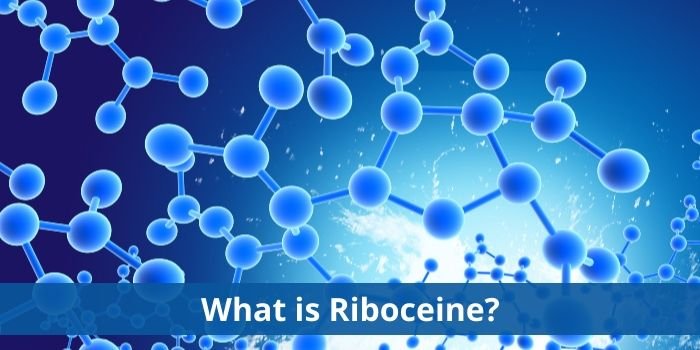
Riboceine is simply d-ribose and l-cysteine combined. Let’s take a look at the role of both the ribose and cysteine compounds, that form the Riboceine molecule.
Cysteine, as you may already know, is an amino acid which is necessary for the production of glutathione. Without enough cysteine, your body cannot make adequate glutathione. One of the challenges with cysteine, is that it’s extremely fragile and needs to be protected in order to make it safely through the acids produced by your digestive system. Kind of like needing an eggshell to protect the precious life contained inside it.
Normally if you just take straight cysteine without something to protect the sulfhydryl group, the sulfhydryl group is destroyed during the digestive process. So you no longer end up with cysteine that can be used to make glutathione. When you attach ribose to cysteine, you protect it in getting through the digestive process intact.
The ribose part of riboceine, is a simple 5 carbon sugar that your body makes inside every cell. It’s part of a molecule called ATP (Adenosine triphosphate). ATP are simply the energy packets (fuel) inside every single cell. One of the issues with ATP, is if you cant keep your ribose mechanism intact, you will slow your ATP production.
Inside of each cell are many mitochondria (the furnaces of the cell). Part of glutathione’s job inside of the mitochondria, is to clean up the mess that is produced when the mitochondria are making the ATP energy packets. This is quite a messy process from the standpoint of giving off a lot of free radicals.
If you do not have enough glutathione inside the mitochondria, ATP production will slow down just to protect the cell from destroying itself with all the free radical damage. So just supporting glutathione alone, will improve ATP production because youre able to let the mitochondria freely make ATP and clean up the mess as you go.
The benefit of the ribose part of it, is the ribose becomes part of the molecule of ATP itself. So now we are supporting ATP production in two different ways.
First of all we are giving raw material that is used in the molecule of ATP. So ribose is now more freely available for the production of ATP. And then glutathione is supported because of the cysteine that was introduced to the cell. And that of course does all the many things that glutathione does, including supporting ATP production within the mitochondria. Ribose does other things as well, like supporting RNA production. But the big one is supporting ATP production.
Both ribose and cysteine are what’s known as endogenous compounds. Endogenous simply means things that your body makes itself.
Though many people have only just heard of Riboceine in recent years, the first published paper on this molecule was in 1987. Given it’s been 26 years since the scientific community were alerted to research related to this molecule , it’s certainly not new.
It was created by a scientist who has a great pedigree in the world of academic clinical research, by the name of Dr Herb Nagasawa. He has been doing clinical research for around 50 years, that was mostly funded by government grants. Nagasawa’s research relates to a lot of different things, all related to cellular health. And he has also worked a lot on projects related to liver disease. Specifically veterans who had liver cirrosis and related conditions. So you’ll find that most of his published studies on places like PubMed, will be about liver issues.
Nagasawa’s impeccable philosophy when it comes to medicinal chemistry research:
What this means is: – things you actually make inside your body, or are a part of what your body is used to seeing inside of you. So endogenous means from inside of you, exogenous means from the outside. So when ever possible if there is a way to support a cellular process with an endogenous molecule that would be his preference.
What this means is: – things you actually make inside your body, or are a part of what your body is used to seeing inside of you. So endogenous means from inside of you, exogenous means from the outside. So when ever possible if there is a way to support a cellular process with an endogenous molecule that would be his preference.
SEE ALSO: Riboceine is the key to why Cellgevity is so effective at raising glutathione levels.